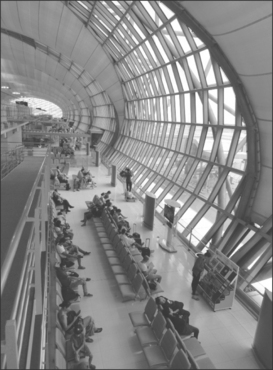
Thailand is in easy country to get around, apart from the southern provinces of Narathiwat, Pattani, Songkla, and Yala, where Muslim insurgents clash regularly with the authorities. The country has a well developed transport infrastructure with good, well maintained roads and a well developed public transportation network. Accommodation is excellent and plentiful in the main centers, and even in small towns the hotels are more than adequate. There is no need to “rough it” unless you really want to.
Thais are inveterate travelers and think nothing of traveling long distances to see relations in far-flung provinces, on shopping trips, on temple pilgrimages, for festivals—or simply to see the sights. Traveling by bus or train enables the visitor to meet Thais, and the travel costs will be much lower than if you use services aimed exclusively at foreign tourists. Bear in mind, however, that outside Bangkok most transactions are done in cash rather than by credit or debit card, and it is helpful if you have your destination(s) written down in Thai in case of communication difficulties.
Most visitors to Bangkok arrive at the brand new Suvarnabhumi Airport, 17.5 miles (29 km) east of the city. It boasts a vast four-story terminal building, 139.12 acres (563,000 sq. m) in area. It handles around 50 million passengers a year, making it Asia’s sixth-busiest airport. The arrivals area is on level 2 and you need to proceed down to level 1 for transport into Bangkok and elsewhere. In addition to taxis and airport limousines there is a new high-speed rail link that will whisk you into central Bangkok in fifteen minutes. Bangkok’s former international airport, Don Muang, to the north of the city, is used by the low-cost carrier Air Asia.

There are direct international flights to some of the provincial airports, notably Chiang Mai and Phuket, which eliminate the need to change planes in Bangkok. If you come to Bangkok on the international express train from Malaysia, the terminus is Hualampong Railway Station, in the middle of Bangkok, which is also a terminus of the underground railway (subway). The station is well served by taxis and buses.
Visas are not necessary for tourists staying up to thirty days. For some nationals only fifteen-day visas are available. If you plan to stay longer, you should get your visa in advance from a Thai embassy or consulate. Check www.mfa.go.th for up-to-date immigration regulations. Do not outstay the period indicated in your visa; the penalties for doing so are a fine or imprisonment.
Bangkok is a tremendously congested city and it may take longer to get to your destination than you expect by road. The new overhead mass transit railway (the Skytrain) is fast and cheap and links up with the underground railway (subway) and the airport rail link.
The ordinary buses are cheap but tend to get crowded and the seats are designed for petite Thais rather than large-limbed foreigners. If you want to use public transportation treat yourself to an air-conditioned bus. These are a little more expensive but are usually reliable and have English-speaking bus conductors aboard. Note that the back seats of buses are reserved for monks, and if you are sitting there and a monk boards the bus you should give it up.
Taxis are cheap—only those in Kathmandu are cheaper, according to a globe-trotting friend—but a taxi driver may refuse to take you to the destination you want at peak times because he does not want to get stuck in a traffic jam (rót tìt, “the cars are stuck,” will be his excuse).
Hotel taxis tend to be more luxurious and more expensive. However, the hotel staff will be happy to instruct the driver precisely where to take you and this can have its advantages for the newcomer. Tipping is not obligatory.
Three-wheeled motorized trishaws (samlor) with their characteristic “tuktuk” sound are cheaper than the four-wheeled taxis, but are also slower and less safe. However, they are an excellent mode of transport on the quieter roads. You usually have to negotiate a fare at the outset.

This is an option for the intrepid, but many people find it is less hair-raising to drive themselves than to be driven. There are a number of good local car rental companies in Bangkok that offer more competitive rates than the multinationals, though their cars will not always be the latest models. You may prefer to hire a driver with the car, which will add only about 50 percent to the cost.
Driving is on the left—as in the UK and Australia—and although there is a Highway Code of sorts most drivers appear to ignore it. Be prepared to drive aggressively and let your motto be “Who dares, wins.” As you are likely to spend considerable amounts of time in traffic jams, in Bangkok renting an air-conditioned car is advisable.
There is a frequent river-bus service that zigzags between the banks of the Chao Phraya River. This is faster than going by road and much more fun. If you are visiting Thailand as a tourist, it makes sense to stay at a place close to the river since transport to the main sights will be easier and more pleasurable.
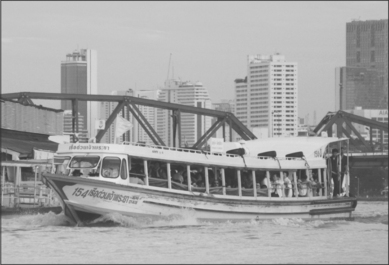
You are unlikely to want to walk far on the sidewalks of Bangkok because of the pollution, the heat, and the humidity. However, a saunter around Sanam Luang, Lumpini Park, or some of the temple complexes is more bearable. Be careful when crossing the road; even at pedestrian crossings the traffic is unlikely to slow down to let you cross.
A number of airlines operate scheduled services to provincial airports from Bangkok, including Thai Airways, Air Asia, Bangkok Air, and Nok Air. If you are in a hurry to get around this must be your transportation of choice.
This is a good, and safe, way to see the country. Train services run from Bangkok to Chiang Mai, Nongkai (where you can catch a shuttle train to Laos) and Ubon in the northeast, Aranya Prathet in the east, Kanchanaburi in the west, and via Haadyai in the south to Kuala Lumpur and Singapore. There are three classes of travel, and there are overnight trains with sleepers (bookable in advance) on some long-distance routes. Supplements are payable for certain trains, sleepers, and air-conditioning. Charges are listed on the Thai Railways Web site (www.railway.co.th).
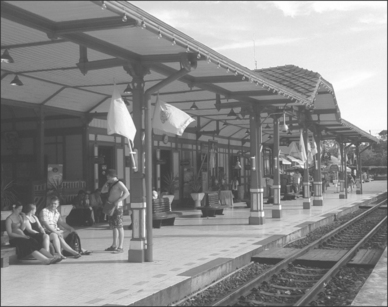
Most of the Thai railway system is single-track and the trains tend to amble—no Japanese-style bullet trains here! But it looks as if that is all set to change. As this book goes to press the government is inviting bids for a high-speed railway line of standard gauge—as opposed to the present meter gauge. In ten years’ time perhaps one will no longer be able to categorize Thai trains as “slow, slower, and slowest.” Diesel railcars, which tend to be third-class only and with limited legroom, can be faster than the so-called express trains.
This is the cheapest way to get about, but some of the bus drivers tend to be erratic. The state BKS bus company (known as “Baw Kaw Saw”) runs long-distance orange buses to all parts of the country from the four bus stations in Bangkok.
Air-conditioned long-distance buses run to some towns, and local tour companies run bus services to resorts that can pick you up at your hotel. Both of these options are more expensive. For really long distances, such as Bangkok to Chiang Mai, bus travel is not to be recommended; train and air travel are more comfortable.
In each province local bus companies ply short-distance routes. If you are on the large side you may have trouble fitting into the seats.
Thai bus drivers (like truck drivers) are a law unto themselves and drive fast and with little regard for other users of the road. In the event of an accident, it is not unknown for the driver to flee the scene.

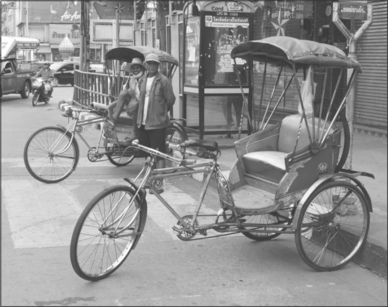
In provincial towns you will find taxis to hire, but in the smaller towns pedicabs and motorized trishaws (samlors) are often a better bet, but you need to negotiate the fare in advance. Out of town you may find shared taxis (sengteo) a convenient way of getting around. These are usually small pickup trucks with seats in the back that ply regular routes and are fairly frequent. Fares are cheap and there is no need to haggle.
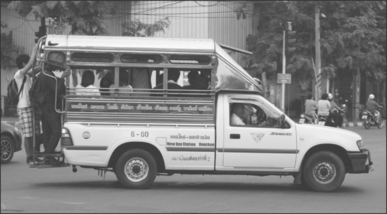
Motorized long-tailed boats operate along the extensive canal network of the central plain and the rivers.
This is a good way of getting around as Thailand has an excellent network of well-maintained main roads, some of them expressways, and traffic jams are rare in the provinces. If renting a car, make sure the rental charge includes insurance—as we have seen, Thai driving is erratic and many drivers seem to be oblivious to other traffic on the road. Gasoline is only lightly taxed and therefore remarkably cheap by European standards. If you are involved in an accident, it is advisable to drive straight to the nearest police station rather than become involved in a discussion. At beach resorts motorcycle and bicycle rentals are available.
It is sensible to avoid traveling during public holidays, especially the Songkhran festival in April, when public transportation is overstretched and the roads are jam-packed. The road accident statistics soar at Songkhran.
This is not a problem. Bangkok is well supplied with hotels and guesthouses to suit every budget and virtually every provincial capital has at least one smart, modern hotel with air-conditioned rooms and much more besides. Even in the smallest townships you will find Chinese hotels—possibly built of wood, with ceiling fans and windows with netting designed to keep out the mosquitoes. They are basic, but normally clean and tremendously good value.
Although most people book accommodation through a travel agent, there are excellent Web sites with details of hotel accommodation (though not the rock-bottom cheapest) throughout the country. Try www.thaihotels.com or www.stayinthailand.com. Since the supply of hotel rooms greatly outstrips demand, except at holiday times, there is little need to book in advance. Just turn up and be prepared to bargain.
Thailand is no worse than any other country when it comes to crime, which means you should not be lulled into a false sense of security. Handbags get snatched, pockets get picked, cars get burgled, and baggage gets stolen if left unattended, so you need to take reasonable precautions, especially in the main tourist spots. Pattaya is particularly notorious.
The Thais are anxious that foreign visitors should go away with a good impression of their country—after all, tourism is a big moneymaker for them—so they now employ tourist police in most of the areas where visitors go.
Women are not particularly at risk in Thailand. Generally speaking, foreign women are treated with politeness and respect, and Thais will often compliment you on your fair skin and your gorgeous hair. But beware of behaving in an over-friendly manner with Thai men in case your motives are misconstrued.
Men, on the other hand, may get pestered by pimps after dark offering them all manner of sexual services with such blandishments as “Mister ow pûying mái?” (Would you like a girl?) A firm “mâi ow, kráb” (No, thanks) should be a sufficient deterrent, but if they persist, complain to the tourist police.
Rumors of people dying of dengue fever, malaria, diarrhea, food poisoning, and so on are greatly exaggerated. Provided you behave sensibly you can avoid illness. Before setting out, read official government health advice for travelers regarding any vaccinations that may be necessary, and other practical information. No vaccinations are obligatory unless you are coming from a disease-ridden part of the world.
Arm yourself with medicines to relieve indigestion, diarrhea, dysentery, headaches, and travel sickness. Antiseptic cream, plasters, and insect repellent are also recommended. These can be obtained in any Thai pharmacy.
Don’t spend too much time in the sun. It is very strong, especially around midday. Wear a hat or sit in the shade. Sunglasses are a must.

Drink a lot, or you will become dehydrated, but take care what you drink. Don’t drink from mountain springs, the river, or stagnant pools. Bottled water is best, and if you don’t like sugary mineral waters, ask for soda water. Always take more salt than you would in a temperate climate.
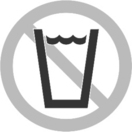
Eat only cooked food. Salads should be eaten only where you know for certain that the ingredients have been washed in clean water.
When sitting outside in the evening use insect repellent. Thai mosquitoes do not carry malaria (except in some border areas), but they do bite. Most bedrooms have netting at the windows to keep them out, with varying degrees of success. If camping out, a mosquito net is essential equipment.

Slow down. Take it easy, like the Thais. If you dash about trying to fit everything in as you might in a temperate climate, you will suffer headaches or tiredness. Don’t expect to achieve as much as you would in a temperate climate.
If you experience a skin rash where clothes rub against the skin, prickly heat powder should relieve it.
Exercise great care in sexual matters. If you indulge, there is a risk of contracting AIDS, gonorrhea, and other sexually transmitted diseases. If you believe you are infected, see a doctor immediately. Embassies and consulates can advise on medical facilities, but most clinics have experience in dealing with such diseases.
Culture shock is another problem to be aware of! Some visitors suffer from imaginary ailments and phobias, the cause of which can be put down to feelings of alienation in strange surroundings. But most people get over this problem. If you have digested the information in this book carefully and acted on it, the situation need not arise.